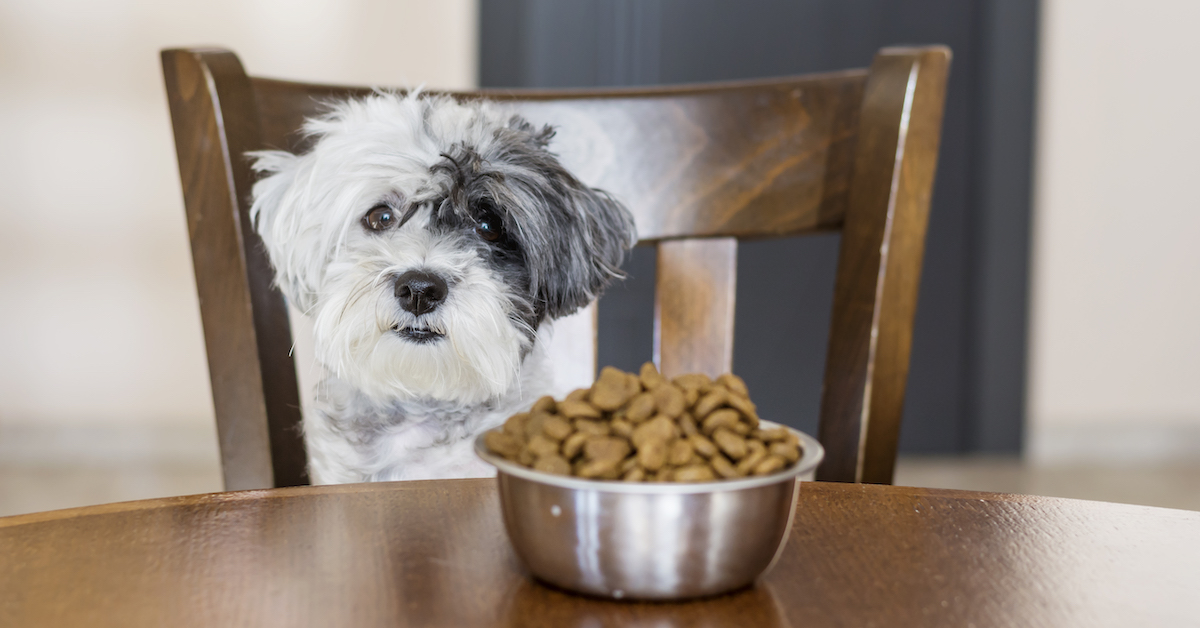Food Allergies in Pets: Is Your Pet Allergic to Their Food?
Food allergies in pets can cause symptoms like itchy skin, abdominal pain, gastrointestinal issues, and lethargy.

Just like their human companions, dogs can sometimes be allergic to certain foods. Food allergies can develop at any stage of a pet’s life but are most common when the animal is less than one year old. While finding out that your pet has a food allergy can be concerning, know that he can live a normal life simply by avoiding problem foods.
What Causes a Food Allergy?
Food allergies develop when the body’s immune system identifies a substance as an invasive threat that must be attacked. This results in inflammation in the body.
Food allergies are often confused with food intolerances. In a true food allergy, the culprit is usually a food protein that causes an adverse immune response. The cells in the animal’s body then release histamines that result in itching and other symptoms.
Food intolerance, on the other hand, does not involve an immune response. However, the signs of food intolerance appear similar to that of a food allergy. For example, in the case of lactose intolerance, a dog is unable to process lactose in milk products well, resulting in gastrointestinal issues like diarrhea. This does not necessarily mean that the dog is allergic to dairy but rather has an intolerance to it.
True allergies are far less common than food intolerances. If your pet is acting normal but is exhibiting mild signs like itching, it is unlikely a food allergy.
Signs and Symptoms of Food Allergies
Similar to food allergies in humans, pets can suffer from a wide range of symptoms when they consume food that they are allergic to. Some of the most common signs and symptoms of food allergies to watch for in pets include:
- Itchy Skin – One of the most common signs of a food allergy is itchy skin. Pets tend to itch their ears, scratch the sides of their armpits, lick their paws, and scoot their rear end on the floor to relieve itching.
- Ear and Skin Infections – Excessive itching can result in skin lesions. Chronic inflammation due to a food allergy can result in trauma to the skin which can sometimes lead to an infection. Ear infections are especially common.
- Hives – When pets consume foods that they are allergic to, they may break out in hives. Hives often appear as red, raised patches on the skin that cause itching and irritation. Look for these in areas with no fur, such as the stomach.
- Gastrointestinal Issues – Food allergies can commonly cause gastrointestinal distress in pets. Some of the most common gastrointestinal issues include stomach upset, excessive gas, diarrhea, nausea, and vomiting.
- Lethargy – If your pet has had less energy lately or has shown a sudden disinterest in activities he once loved, a food allergy may be the cause. Lethargy is one of the most common signs of a gastrointestinal food allergy.
How to Treat Food Allergies in Pets
If you suspect that your pet may have a food allergy, it is important to schedule a vet visit to discuss your concerns. Your vet will ask for a detailed history of your pet’s diet, as well as what signs and symptoms you have noticed. Your vet will then perform a physical examination to assess the condition of the skin and the animal’s overall health. A thorough examination, and possibly some testing may be needed to rule out other health conditions.
Food elimination trials are often recommended to pet owners when food allergies are suspected. When the potential food allergen is completely removed from the pet’s diet for about six to 12 weeks, any signs and symptoms should subside. In the meantime, your vet may recommend a commercially-prepared diet free of possible allergens. You can also choose to prepare a homemade diet under close vet supervision to avoid nutritional deficiencies.
During an elimination trial, no other foods should be given to the animal. This includes food, treats, table scraps, chewable medications, heartworm medications, hairball treatment, or anything your pet may discover in or out of the home, such as stool. Once the elimination trial is over, your vet may recommend slowly introducing foods back into your pet’s diet. It is important to do this slowly to see if any symptoms return. Once you discover what ingredient is causing the problem, remove it from your pet’s diet.
When to Contact Your Vet
There is always a chance that your pet may refuse to eat the elimination diet. If your pet goes more than 24 hours without eating after starting the elimination trial, contact your vet for advice. There may be a different commercial food available for your pet or your vet may recommend a new at-home diet to prepare.
It is also important to schedule follow-up appointments so that your vet can monitor your pet’s progress during and after the food elimination trial. Provide your vet with as many details as possible, including any improvements or worsening of symptoms. If your pet continues to experience symptoms or symptoms become severe, your vet may refer you to a specialist, such as a veterinary dermatologist.
The good news is that having a food allergy is usually not a major concern if you take the necessary steps to control your pet’s diet. Your vet may prescribe medications to help relieve some of your pet’s symptoms and prevent infection. Most pets with food allergies can live happy, healthy, and long lives once the problem food is eliminated.
Ready to start saving money on pet wellness care?
Then take a look at Mint Wellness, the pet wellness plan that provides fast reimbursement on routine pet care. Save on vaccinations, wellness exams, preventatives, dental, and more!
Learn More


